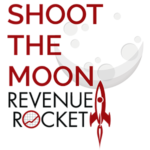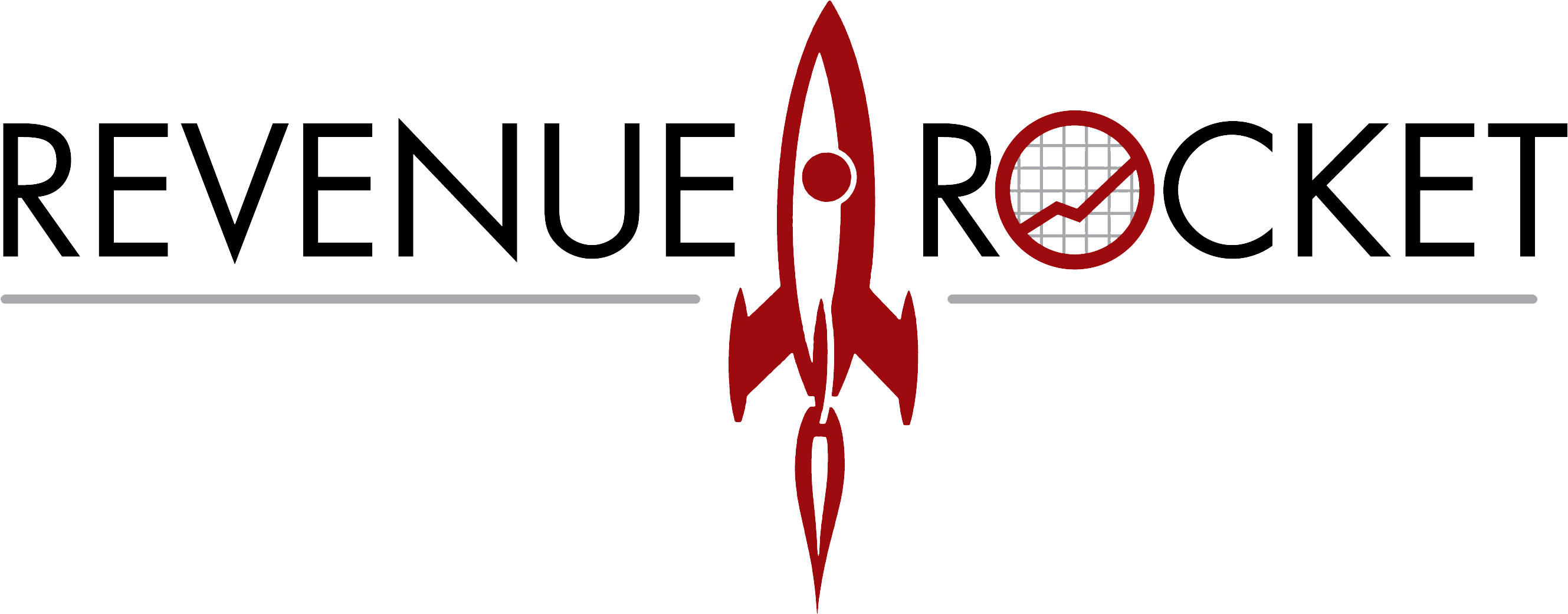29 Mar Why Inorganic Growth is Never off the Table

Considering a merger or acquisition but not sure where to start? Revenue Rocket can help! Reach out for a free, no-obligation introduction call: https://www.revenuerocket.com/contact-us/
EPISODE TRANSCRIPT:
Mike Harvath 00:02
Hello, this is Mike harvath. With this week’s Shoot the Moon podcast broadcasting live and direct from Revenue Rocket world headquarters in Bloomington, Minnesota. We are the world’s premier growth strategy and m&a advisory firm servicing IT services companies. With me today is my partner Matt locker. Matt, welcome.
Matt Lockhart 00:26
Hey Mike, how’s it going? We’re, we’re a little short handed today because the the standard third leg of the proverbial stool Ryan is hopefully in need deep powder right now out in Colorado, doing a little skiing. But you know, let’s see what we can get done here today.
Mike Harvath 00:48
Yeah, sounds great. Yeah, as those of you that follow our podcast, probably know, most of us here at revenue Rocket are, love of skiing and snowboarding. So this is a great time of year for us. And Brian certainly is off doing a little bit of that today in Colorado. Hey, Matt, I heard some great statistics from our marketing team that, you know, I wanted to share appears that as we approach our 100th podcast, that we’re we’re also approaching 10,000 downloads of our podcasts. And I want to thank everyone for their continued dedication and, and support of listening to this program.
Matt Lockhart 01:31
Yeah, you know, it’s really cool, that we get consistent feedback, you know, from people that they listen, they take, they take notes and nuggets. And so I think we’ll we’ll just keep on keeping on right. And, and doing our darndest to provide value through this format. You know, one of the things that we like to say is it’s a it’s a great drive time, right? You know, we try to keep these around 20 minutes or so. So it’s a great drive time activity, or maybe treadmill, you know, listen, and and, you know, it’s just great to chat about what’s going on in this super growing marketplace. And I think we got a great topic today talking about inorganic growth strategy.
Mike Harvath 02:26
Yeah, absolutely. That’s what best in class firms do, is have consistent sort of m&a inorganic growth strategy. We all you know, we’ve talked quite a bit, you know, over our time, here, doing our podcasts about the value of organic growth strategy, and how we implement it through our program called SVP and what we recommend, but today, we’re going to dig in a little bit on, you know, having an ongoing buy side inorganic strategy. And having it be in place is, is why that’s super important. And so, Matt, maybe you can kind of kick us off a little bit on your thoughts about that, and some maybe some of your personal experiences that you had, as an operator, I think the audience would enjoy to hear a little bit about that.
Matt Lockhart 03:17
Yeah, I think it’s, I do think that it is what best in class firms do, you know, let’s talk about some of the, you know, sort of guiding principles as to why an inorganic growth read well, and maybe we’ll back up and just do a definition, organic growth strategy is the work that you’re doing on your own, and through your sales and marketing, as well as overall, you know, value creation that you’re doing, working within your team, and getting better and getting more customers and extending your marketplace. But it’s all the work that you’re doing internally, that’s organic growth strategy. And I know this is kind of one on one stuff, right. But in organic growth strategy is looking at acquisitions as a means to creating more value in your firm. And, and growing your business. And, and sorry, some of the things that we always looked at previously, and I think that it holds true is that you’re looking at it as a means to extend your marketplace, that could be geographically that could be vertically and just having more reach into the into the marketplace in general and and looking at acquisitions as a means to doing that, you know, can certainly make sense. Additionally, you may be looking at your inorganic growth strategy to to bolster and round out and or add to your overall offerings be that product offerings or service offerings. You know, maybe you see some competitive threats where competitors are doing things that you’re not doing. And you need to close that competitive gap as quickly as possible. And so looking at an at acquisitions in an inorganic growth strategy as a means to be more competitive in the marketplace is another, you know, lens to be looking at. Right. And then there’s a third, and this is often, you know, more common today than I think it ever has been. That there’s, we’ve talked about it previously, there’s just, we’re out of balance in the supply and demand equilibrium. And what I mean by that is, is there’s not enough talent in the IT service and or SAS platform base, you know, there’s just not enough people with talent, be it software developers, infrastructure engineers, program managers, everything. And so firms are looking to close the talent gap that they may have, in looking at it, and through an acquisition lens. So those are some of the things that we’re seeing today, Mike, what am I missing?
Mike Harvath 06:18
Well, yeah, I mean, I, you know, sometimes you’ll hear the term, I want to go a little bit on your comment about talent gap, you know, certainly there’s a term, sometimes thrown around called the Accu hire, where you essentially are acquiring talent as a predominant focus area for your acquisition of a particular acquisition initiative. But I think more broadly, you know, when you think about acquisitions, and having them line up, you know, we often say you only need to line up strategically, culturally and financially, strategically, really has a lot to do with that staff and those staff roles and, you know, maybe a situation where you have a particular role, a senior role or group of roles that really needs to be filled, right, you’ve been struggling to do that, on the organic side, or through a normal sort of hiring process, since, as you know, we sort of remain in this, this negative unemployment marketplace for, you know, consultants and and IT services executives, and that’s certainly drives salaries and scarcity, you really have that talent. And, you know, through an acquisition, oftentimes, you can sort of plug those gaps, fill those gaps, and in, turn it into a really strong competitive advantage, not just the, you know, Actaea call that more intangible benefit of that acquisition, versus the dollars and cents of a particular acquisition really have to be weighed in the current market. And I think the smart, you know, sort of back to best in class, operators are thinking about it in that way. Certainly, that’s driving a lot of a lot of deals. You know, we also mentioned oftentimes that, you know, we’ve looked at it this way over the years, you may have heard us talk about this, or seen articles, and some of the interviews that had been done in the press, with Revenue Rocket, over the years, leave about 50% of your growth potential on the table by not having an active buy side, you know, m&a effort underway at all times. And that’s been, you know, proven out, based on not only our own experience over the last 21 years, looking at, you know, these statistics and driving deals for clients, but, but also in the broader statistic, you know, generally supports that effort. So, again, that’s back to why, you know, the best firms have this active inorganic strategy being implemented, always are looking for the right transaction, to complement their business and ultimately, they grow. They grow a lot faster because of it.
Matt Lockhart 09:09
Yeah, totally. You know, and we talk about this ongoing aspect of, of your inorganic acquisition growth strategy. And it’s, you know, I think super important. I mean, look at, you know, just in the past couple of days, one of the big news was that Google is going to be acquiring Mandiant secured Cybersecurity Information firm. It’s a big deal, like over $5 billion. Well, that doesn’t just happen overnight. Right. I mean, Google has obviously had that as part of one of their strategic imperatives, and it’s within their strategic plan. And, you know, likely they’ve been making moves and they have been obviously to bolster their overall security posture organically. But add to to meet their strategic objective and their strategic plan, they clearly have always been looking and keeping the potential for an acquisition to be in place. And that, again, it doesn’t happen overnight. And so they, on an ongoing basis, have had this as part of their strategy. And, you know, doing buy side acquisition and thinking inorganically is, you know, it’s not easy, right. And it takes time. And it it takes a concerted effort over time, which is why we talk about having it as an ongoing, you know, never ending aspect of one’s overall strategic golf growth goals.
Mike Harvath 11:01
Yeah, for sure. You know, I think, oftentimes, we’ll get a question from a client about Well, that’s great, Mike, but how in the heck do you actually execute on that strategy? When we’re all busy kind of running and growing the business organically and playing a role? And I think, you know, that’s the business case for involving an outside advisor. It’s a perfect example of where thinking about corporate development, which is what, you know, firms like Google use, they have a corporate development department, or they’re out looking and cultivating, you know, m&a discussions and ultimately leading to transactions like Mandiant. Where as a IT services company that may be, you know, a little smaller than Google, you know, how do you execute on that, essentially, what you do is you outsource that function, you also said function to a firm like revenue rocket, one that can help you formulate the strategy makes sure that the acquisitions align to your all up growth goals, to execute against doing outreach. Being able to qualify, the companies, being able to bring them to the table, get all the paperwork, you know, put together get NDA signed, kind of move through the conversations, to help get to ultimately everyone’s saying they want to look at a deal, do evaluation, you know, get to a deal per se, and then focus on getting due diligence done so that, you know that what you’re acquiring is, you know what that seller says that God and confirming that it’s really the asset quality, that you would expect to acquire your business and, and I think, in many ways, you know, that frees up business owners and IT services leaders to, you know, execute on a strategy, a real strategy and m&a with a high degree of likelihood for success versus trying to bootstrap it, do it around the edges where, you know, many statistics say you only have about a 1% chance of getting those deals done if you try to roll your own inorganic growth strategy.
Matt Lockhart 13:13
Yeah, I think that’s a good point, like I do, you know, you use the term outsource right to an advisor. And I think that that’s a, I think that’s applicable, you’re, you’re outsourcing aspects of the overall execution of the strategy, you’re not outsourcing everything, you know, a firm is going to have to participate, they’re going to have to have the key executives are going to need to continue to play their role. And as the strategy evolves, communicating that, in assessing the, you know, the priorities for an acquisition being involved in that, when opportunities come to bear, you know, there’s ongoing participation from those firm members. But by partnering, you know, with a best in class firm, like Revenue Rocket that has all of the capabilities to manage the ongoing execution of the day to day and, you know, it does allow those key executives to continue to run their business and, and continue to execute well in their organic, you know, growth objectives. And so I think that’s key, but it’s not like you can not pay attention right? You’re everybody’s you’re partnering together to execute well, and find more predictable success.
Mike Harvath 14:44
Yeah, for sure. You know, it’s you still have to be engaged and make sure that you’re betting these candidates and someone you can work with and you know, frankly, we joke around a little bit around this around here, you know, and not try to you know, not buy a company with someone that you feel you want to back your car over when the deals done, you want to be able to acquire a company that with staff and leadership that you can work with, or one plus one does equal three. And where there is a real potential synergy for going places together that you just can’t go apart.
Matt Lockhart 15:21
Without a doubt, you know, so let’s talk about just some of the, you know, key basics, right, you’re going to budget for it, you’re going to budget for your inorganic growth strategy, I in, in an ongoing operational expense, right? Whether that means you’re you built, you’re building a corporate development program internally and staffing that internally, or maybe, you know, you’re staffing a key or are assigning a key executive, as the ongoing, you know, leader, you know, towards the inorganic growth strategy, and then you are working with a firm like ours, to help manage the ongoing execution. So you budget for it, and you budget for it on an ongoing basis? Right. You, you are you’re building your team, you know, yes, maybe one key executive has the the leadership role. But that’s not everybody that will be required, as you’re as you’re moving down the path in acquiring a firm, you who are the appropriate team members from finance, who are the appropriate team members from HR, who are the appropriate team members from even marketing, right, and or product development, that will have a role in assessing the appropriate opportunities, and then thinking about building in the integration plan. Right. So you’re budgeting appropriately, you’re staffing appropriately, you’re picking an ongoing partner, you are continually mapping it against your your strategic plan. Right? And, and so, which enables the prioritization of what we call the ideal prospect profile. And, and so there’s just this ongoing sense that this is part and parcel to the business, and it’s funded appropriately. And it’s staffed appropriately.
Mike Harvath 17:26
Yep, for sure. I think, you know, the way I would, you know, this may seem like a little bit of foreign territory, particularly if you haven’t done m&a deals. Or even if you have, you know, sometimes there’s some concerns about the challenge of just getting a deal done or integration challenges, or, you know, and you might be like, oof, we did that we’re retired, we need to recover, I think, certainly being able to make sure your ducks are in a row, as it relates to budgeting and financing and, and strategy alignment, and team alignment. All those things are done, it makes execution on your ongoing m&a effort, much easier. And so, with that, I think we’re gonna do you think, Matt, I think we should wrap it up today?
Matt Lockhart 18:21
Well, I think we’re getting close, you know, as you talked about before, and more and more people are paying attention. So for whoever’s paying attention today, if, if you think that we’re off, we’d love to hear about it, if you think that we’re on, and we’d love to hear about that, too. If you want to talk more in depth in terms of how an inorganic growth strategy can be a huge value creation for your firm. We’d love to talk to you about that. We’d love to put you in touch with others who are doing that successfully. And you know, let’s go out and and get it done.
Mike Harvath 19:02
Sounds great, Matt. Sounds great. So I think with that, we’re gonna tie a ribbon on it for this week podcast already in organic growth. Make it a great week. Take care.


